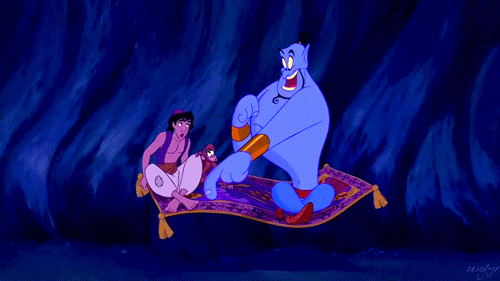Aladdin: An Old New World

25 years after its release, Aladdin remains a peak for the vanishing art of Disney 2D animation.
By Rowena Lloyd
An entire 25 years after Disney’s initial release of Aladdin, the beloved classic still represents a benchmark for the art form’s possibilities. The hand-drawn 1992 film, directed by Ron Clements and John Musker, is a key moment in Disney’s renaissance or ‘second golden age,’ which began as the artists who established the art form as we know it — with films such as Snow White (1937) and Pinocchio (1940) — retired, passing on their teachings to the next generation.

Clements and Musker were receptive to these teachings, and in a position where they had to do the legacy justice whilst forging their own path. Preceding Aladdin, the two wrote The Black Cauldron (1985), The Great Mouse Detective (1986) and The Little Mermaid (1989) together, and each venture was stronger than the last. By the time they began to write and direct Aladdin, Clements and Musker had perfected the art of animated storytelling. It would become one of their most celebrated films.
The film’s significance shines through most notably in its characters, in particular that of the comedic blue Genie, memorably voiced by the late Robin Williams.
That perfection was also reflected in the entire team that made up the production. Art directors, story artists, animators and background artists all brought the formidable sum of years of experience to Aladdin. The film’s significance shines through most notably in its characters, in particular that of the comedic blue Genie, memorably voiced by the late Robin Williams. The characters here are vehicles not just for story and emotion, but for comedy — embodied by Aladdin’s heroes and villains alike. This humour was carried through to The Lion King (1994), Pocahontas (1995) and Mulan (1998). Arguably, the memorable and charming wit we now come to expect of Disney movies found its identity among the pages of Aladdin’s screenplay.

With Aladdin now joining Disney’s trend of live-action remakes — Guy Ritchie is set to direct, with Mena Massoud starring as Aladdin, Naomi Scott as Jasmine and Will Smith as Genie — it raises questions as to what traditional 2D animation’s place will be in film.
Disney’s most recent remake, Bill Condon’s Beauty and the Beast, was met with mixed reception. While some publications described the remake as “darker, smarter, and more relevant”, others wrote it off as “a tale as old as time, told worse.” By comparison, its 1991 predecessor was the first animated film to be nominated for the Best Picture Oscar. The film’s unprecedented reception ushered in a new assertion: that animation could stand alongside live action in prestige status, and that animators were filmmakers and artists just like their Hollywood counterparts.

But has the recent string of live-action remakes, together with the progress of CGI and 3D technology, negated the value that the second golden age gave to 2D animation? Disney’s only traditional venture since their 2006 acquisition of Pixar was The Princess and the Frog (2009), a critical success that paled in box-office comparison to its stablemates Tangled (2010) and Frozen (2013). While the historical status of hand-drawn features like Aladdin may be significant, the legacy they represent — of an art form that is irreplaceable and has enduring value within cinema — is clearly feeling the weight of time’s technological innovations.
Aladdin reminds us that the best version of a tale doesn’t spring from the box-office potential of existing properties, but from the strength of a story perfectly told.
Despite this, the irony remains: while the live-action reinterpretations may appear more “real” than the originals, they feel far less so in terms of memorable characters, humour, and emotional impact. Aladdin reminds us that the best version of a tale doesn’t spring from the box-office potential of existing properties, but from the strength of a story perfectly told.
